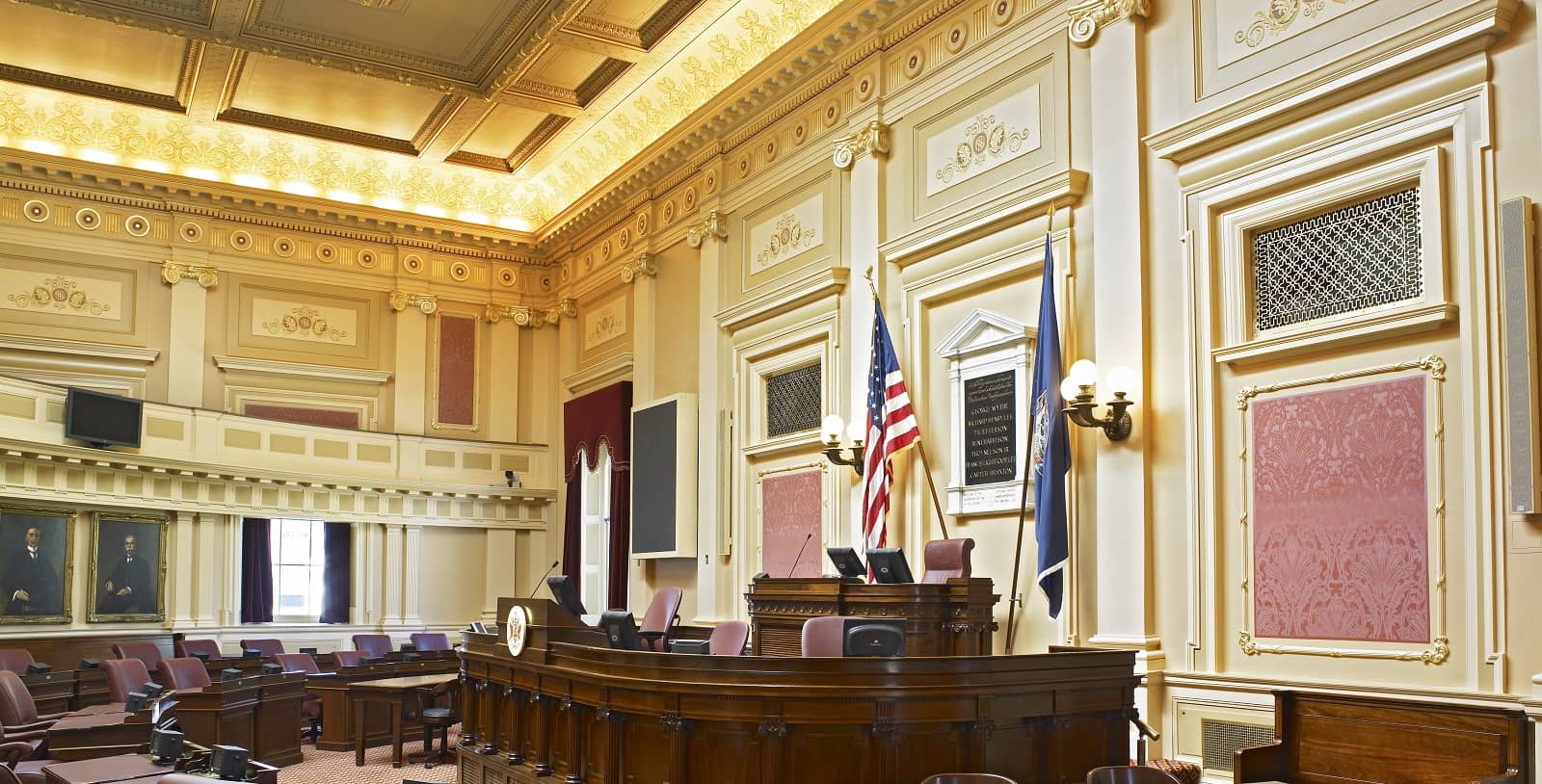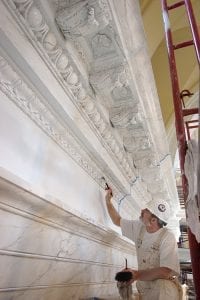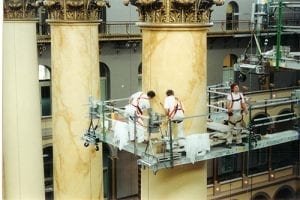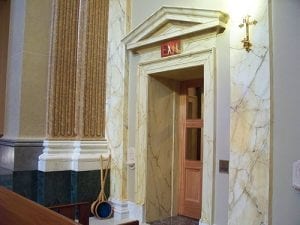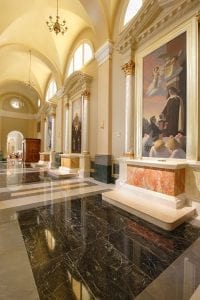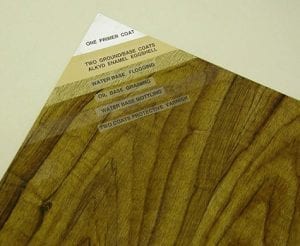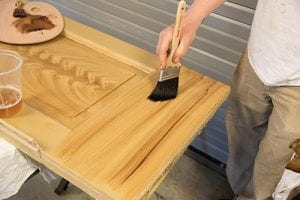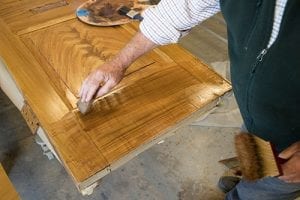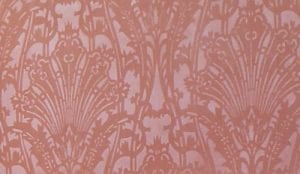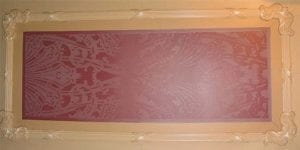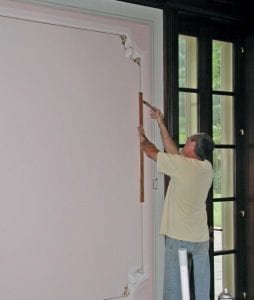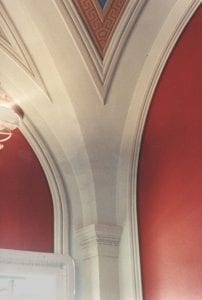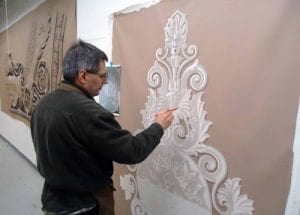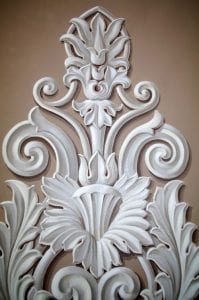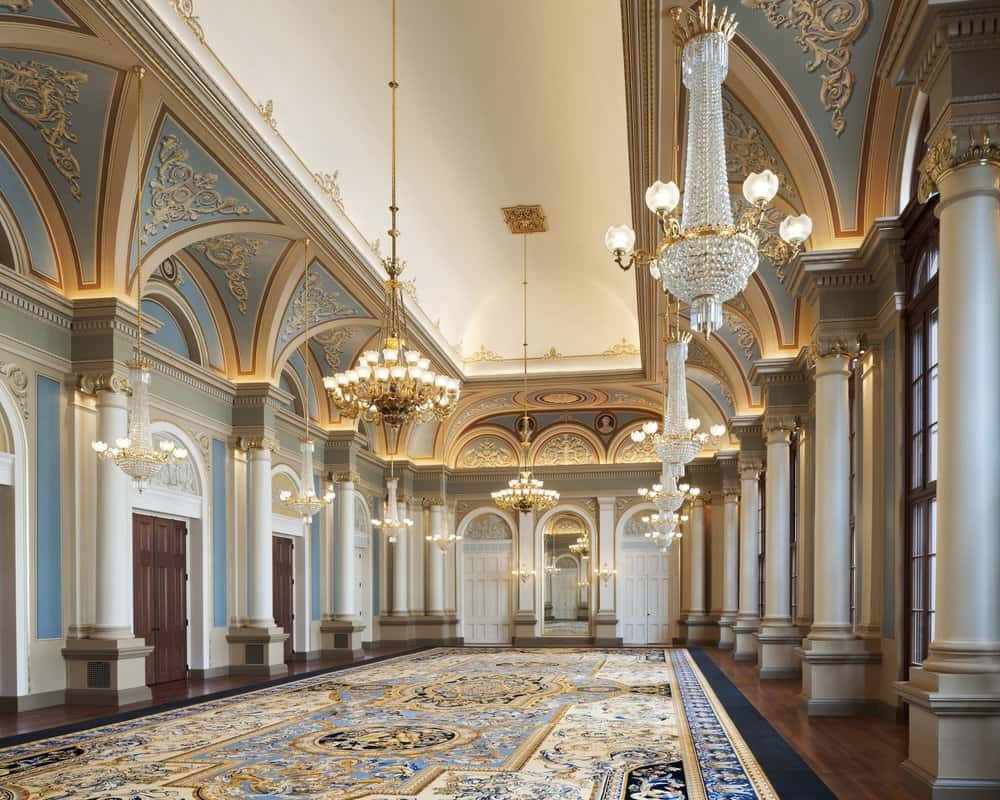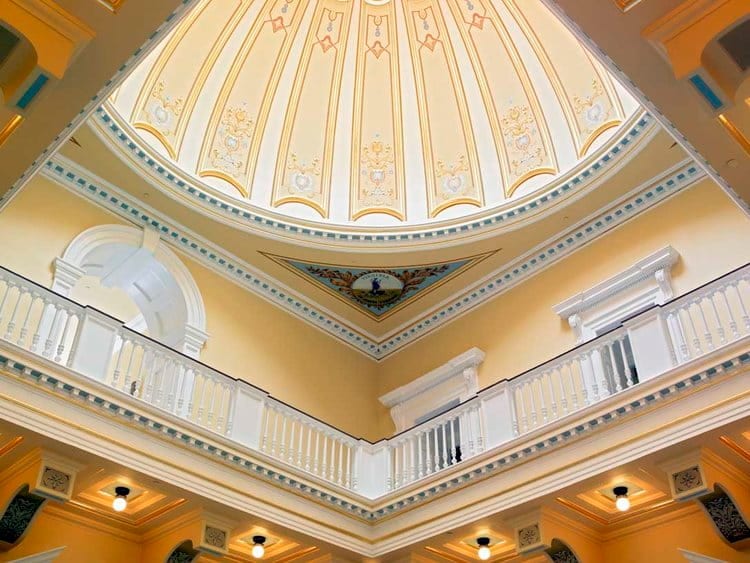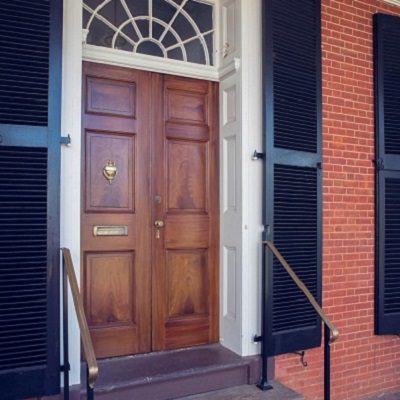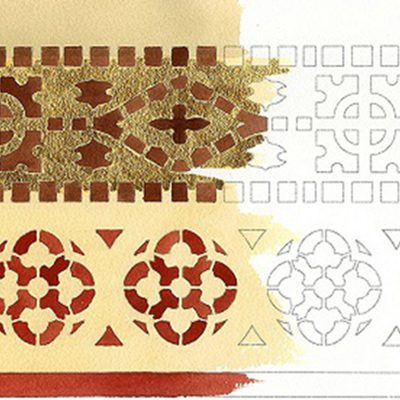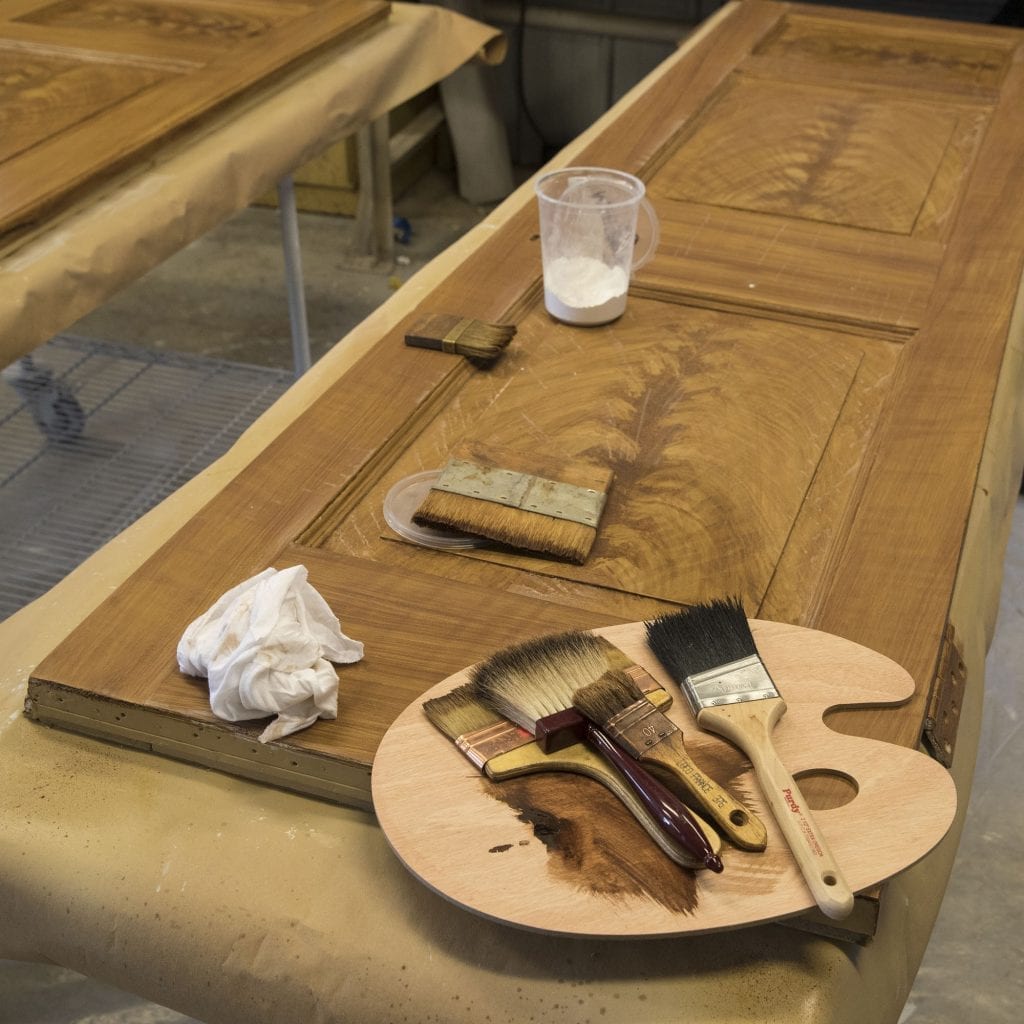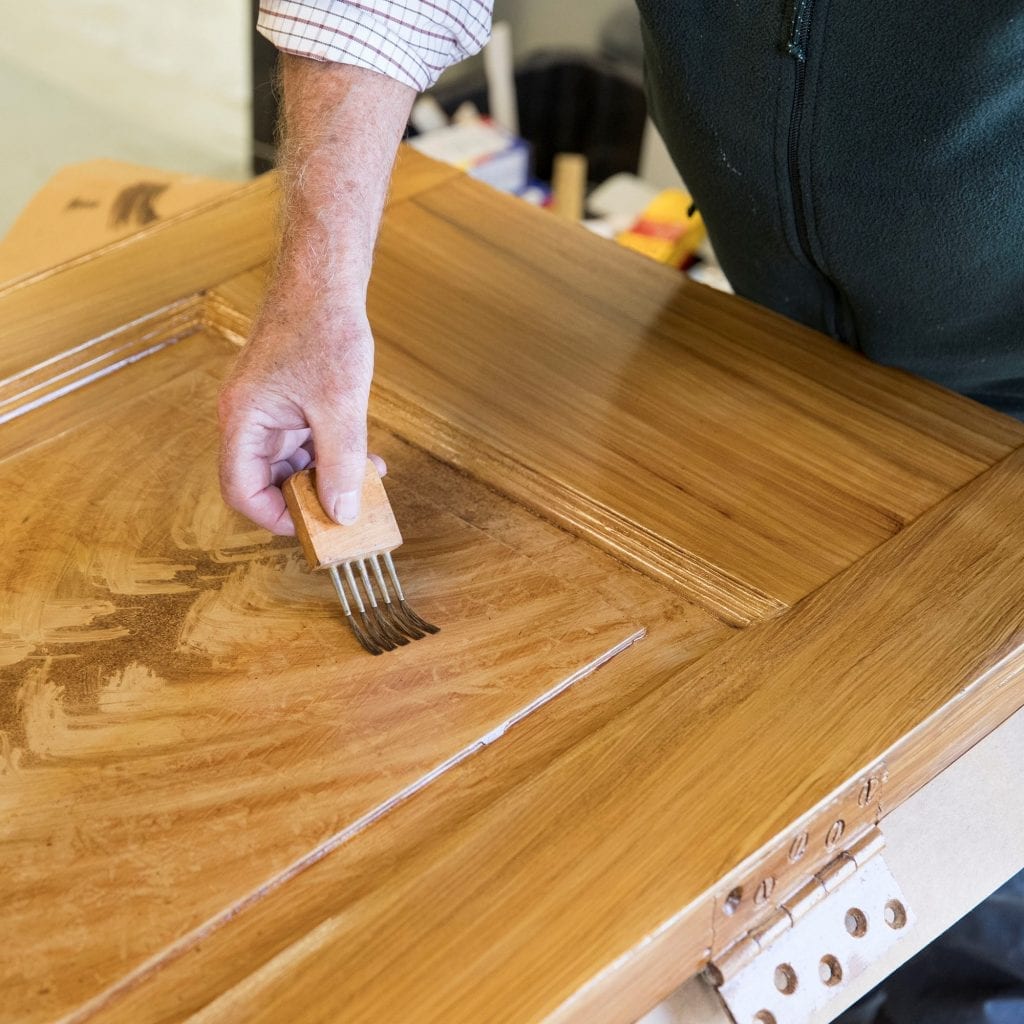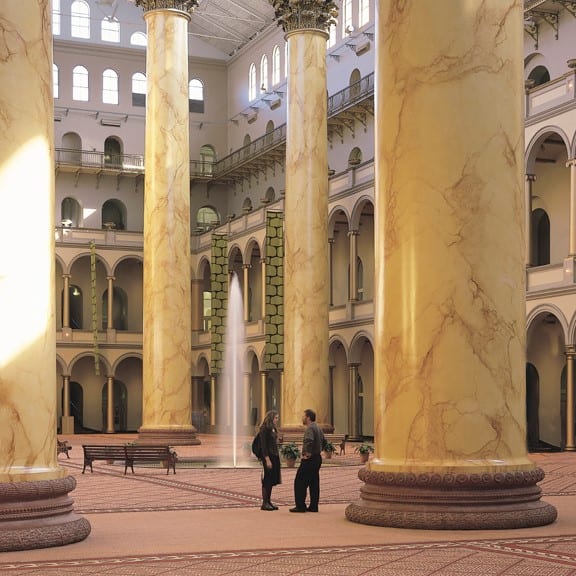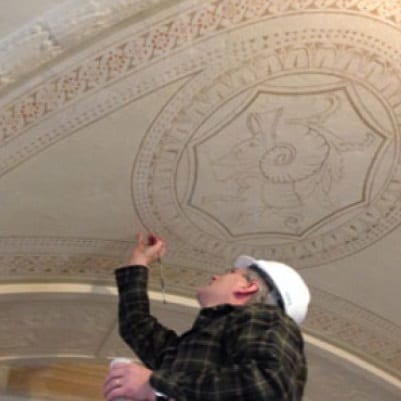What are Faux Finishes?
Faux finishes have long been employed to help minimizes building costs by mimicking the effect of expensive materials, like marble, exotic woods, and carved moldings. Proper execution of key faux painting techniques can result in a finished product that is near indistinguishable from the genuine material.
Historic Faux Painting Techniques
Some of the most common faux finish techniques used in historic buildings include marbleizing, woodgraining or faux bois, strié, and trompe-l’oeil.
Marbleizing Finish Technique ( Faux Marbre),
Quite simply, marbleizing, formally known as Faux Marbre, seeks to take an ordinary material, like wood or plaster, and transform it to look like polished marble. Skilled craftsmen use a variety of techniques to create their desired effect, often varying their approach depending on the type of marble they are trying to mimic. The depth of field exhibited in the work of highly skilled craftsmen comes from utilizing two main, yet distinct techniques:
Scumble: This technique uses thinned opaque paints that are applied over an opaque paint basecoat. This process can be repeated with different colors and paint consistencies, which ultimately provides more depth.
Glaze: Unlike paint, glazes are semi-transparent and can have an oil or water base. Varying the level of pigmentation in the medium and consistency of the glaze medium results in a layered effect.
Woodgraining (Faux Bois)
Woodgraining, formally known as Faux Bois, is a faux painting technique that is used to mimic the texture of wood.
Throughout history, wealthy merchants incorporated various kinds of moldings within their homes, which were often very expensive and had to be carved entirely by hand. And, although wood was a ubiquitous building material, exotic wood species were not. As such, most moldings were crafted with common wood, like pine or oak, to help minimize costs. Woodgraining served as a way to not only escape from the limited color palette of a particular time period by adding natural wood tones, but also simulated expensive mahogany or English oak.
Like many faux painting techniques, woodgraining is a process of layering paint/pigmentation either with a brush (most common) or by sponging, and then buffing the finished product with oils, or applying varnishing, to give it a rich wood polish. A thick, opaque base layer disguises the actual wood species and offers a neutral starting point for subsequent layers.
Strié Glazing Technique
Strié is a French glazing technique that simulates the look of fabric, most commonly silk and linen. Similar to the art of stenciling, the principles of the application are quite simple, but it can be rapidly complicated depending on the desired effect or scale of the application.
In its simplest form, a base coat of glaze is applied to the wall and a brush is dragged in a vertical or horizontal motion (sometimes both depending on the fabric being simulated). The bristles of the artist’s brush result in soft lines resembling a traditional weave. The addition of stenciling and raised stenciling techniques can give a jacquard effect.
Illusionistic Painting ( Trompe l’oeil )
Forced perspective, stenciling, and free-hand painting meet to bring to life this popular three dimensional effect of illusionistic painting, also known as trompe l’oeil. Though the technique was perfected in the early 13th century to enhance large wall murals (traditionally in churches) with three dimensional detail, trompe l’oeil found its way into wealthy homes and early colonial government buildings.
Illusionistic painting if often applied to large stenciled areas to achieve a look of realism by applying shadow from a forced perspective point, mimicking a raised plaster relief. This method has practical applications for both walls and ceilings. Interestingly, the technique was popular across a range of architectural styles including colonial, federalist, and beaux-arts.
The Power of Faux Finishing
Faux painting has the power to transform flat, humdrum spaces into truly remarkable surfaces. Whether your project aims to create the look of a material—marble, wood, or fabric—or seeks to create a three-dimensional effect on a flat surface, a professional conservation firm can create, restore, or expand upon existing detailing.
A trustworthy professional team will be able to employ various testing methods to determine original color schemes, application processes, and original designs. From these findings, artisans can execute a conservation effort that honor’s the building’s history.
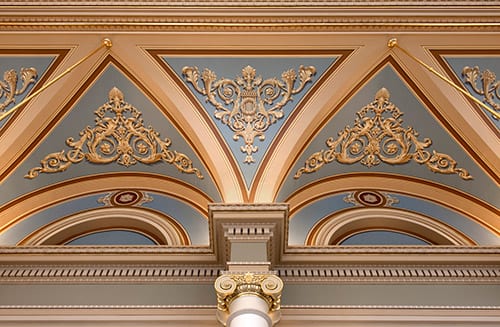
Prior to starting any project that requires highly skilled craftsmen,however, it is important to find the right team for the job. When looking for a reputable contractor, be sure to evaluate key qualifications such as licensing, experience, and expertise. You should also be sure to understand and review a contractor’s past projects to not only ensure their experience aligns with your needs, but also that you are satisfied with the quality of their work.
John Canning & Co. has extensive experience and expertise in the fine art of decorative painting and finishes. In over 45 years of operation, we have been pleased to apply our craftsmanship to projects such as the Philadelphia Academy of Music, Independence Hall, the Pennsylvania State Capitol, and many more.

